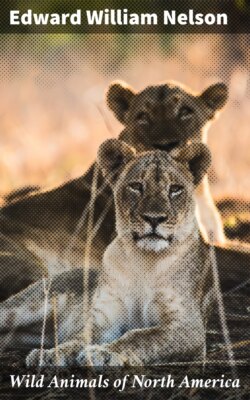Читать книгу Wild Animals of North America - Edward William Nelson - Страница 11
VAST NATURAL MUSEUMS OF EXTINCT ANIMAL LIFE
ОглавлениеFor ages Asia appears to have served as a vast and fecund nursery for new mammals from which North Temperate and Arctic America have been supplied. The last and comparatively recent land bridge, across which came the ancestors of our moose, elk, caribou, prong-horned antelope, mountain goats, mountain sheep, musk-oxen, bears, and many other mammals, was in the far Northwest, where Bering Straits now form a shallow channel only 28 miles wide separating Siberia from Alaska.
Photograph by L. Peterson
INTRODUCING A LITTLE BLACK BEAR TO A LITTLE BROWN BEAR AT SEWARD, ALASKA
“Howdy-do! I ain’t got a bit of use for you!”
“What do I care! You’d better back away, black bear!”
The fossil beds of the Great Plains and other parts of the West contain eloquent proofs of the richness and variety of mammal life on this continent at different periods in the past. Perhaps the most wonderful of all these ancient faunas was that revealed by the bones of birds and mammals which had been trapped in the asphalt pits recently discovered in the outskirts of Los Angeles, California. These bones show that prior to the arrival of the present fauna the plains of southern California swarmed with an astonishing wealth of strange birds and beasts (see page 401).
The most notable of these are saber-toothed tigers, lions much larger than those of Africa; giant wolves; several kinds of bears, including the huge cave bears, even larger than the gigantic brown bears of Alaska; large wild horses; camels; bison (unlike our buffalo); tiny antelope, the size of a fox; mastodons, mammoths with tusks 15 feet long; and giant ground sloths; in addition to many other species, large and small.
With these amazing mammals were equally strange birds, including, among numerous birds of prey, a giant vulturelike species (far larger than any condor), peacocks, and many others.
